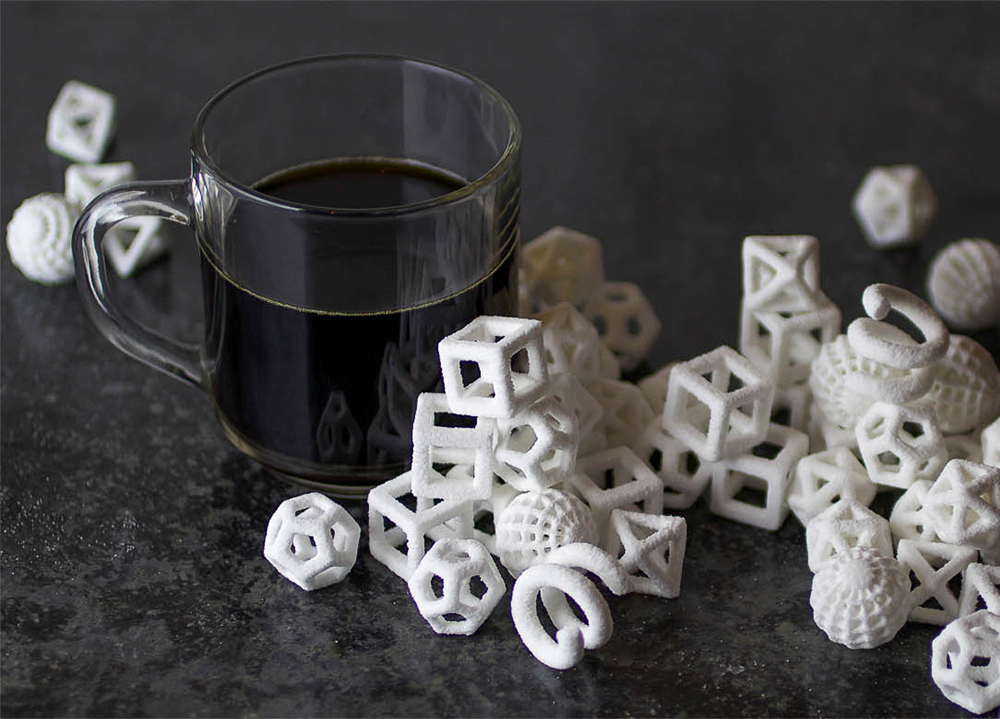Printed Confectionary: The Sugar Lab Takes on 3D Printing
/Snapshot: Snowglobe perfect details and detailed swoops of lines mark the products of the Chefjet 3D Printer. It sounds odd – manufactured, printed confectionary – until you actually see the designs: carefully tapered edges, ribbon-thin walls, and white geometric lattices all crafted from sugar cubes.
The Chefjet, from 3D Systems, works with the same color-jet printing technology of 3D printers, yet replaces coils of plastic thread with sugar cubes as raw material. Thousands of sugar cubes form the “structural medium” uniquely allowed by the additive process of 3D printing. CAD-created drawings are sliced into thin layers of this “core” material. Take sugar cubes, for instance, modeled into ornate skull designs. The printer slices the virtual drawing into myriad layers, and then models them back into form via the actual printing process. Et voila! Manufactured sugar skull. And the layers are so tiny, so numerous that they are no longer visible in the finished product. How cool is this, that the delicate grains of a sugar cube – here the raw material – are deconstructed and layered on like the strata of sedimentary rock. Not visible, but compacted into a monolith or sculpture, like so many grains of sand which compose vast sandstone cliffs.
Yet these creations are edible, intricate, delicate even. Complex deoxyribonucleic forms rest delicately in a glass before melting away as hot coffee is poured in. It is a beautifully elemental process: grain to sculpture, then sculpture to syrup as the sucrose meets its melting point. The Sugar Lab founders Liz and Kyle von Hasseln developed the company post-architecture grad school, turning their design sensibility into a confectionary start-up. As good designers, they paid attention to trends, and relied on a device that served them well with architectural modeling. More importantly, they understood the elemental shifts with which 3D printing is changing how objects are conceived and produced. Their “micro-design” firm draws on 3D printing’s advent in the design community: a new approach in which concept dissolves into construction. Architects, industrial designers, and even artists can take concepts and receive a near-immediate prototype in miniatures, models and 3D avatars. Moreover, all of this comes from a mini-manufactory which might be no bigger than the computer screen upon which its products were designed.
Consequently the Hasselns, along with 3D Systems, hope to change the world of commercial kitchens. Their new Chefjet printers - which can construct intricately patterned, customized, and even colored models – will be offered at the 5 and 10 thousand price points later this year. Cake toppers, candy sculptures, custom sugar cubes, and other confectionary treats can all be designed and created without the labor of hand-crafted techniques. More amazing, perhaps is the endless possibility allowed by this 3D confections printer: if you can dream it, you can eat it.
Photography by The Sugar Lab










